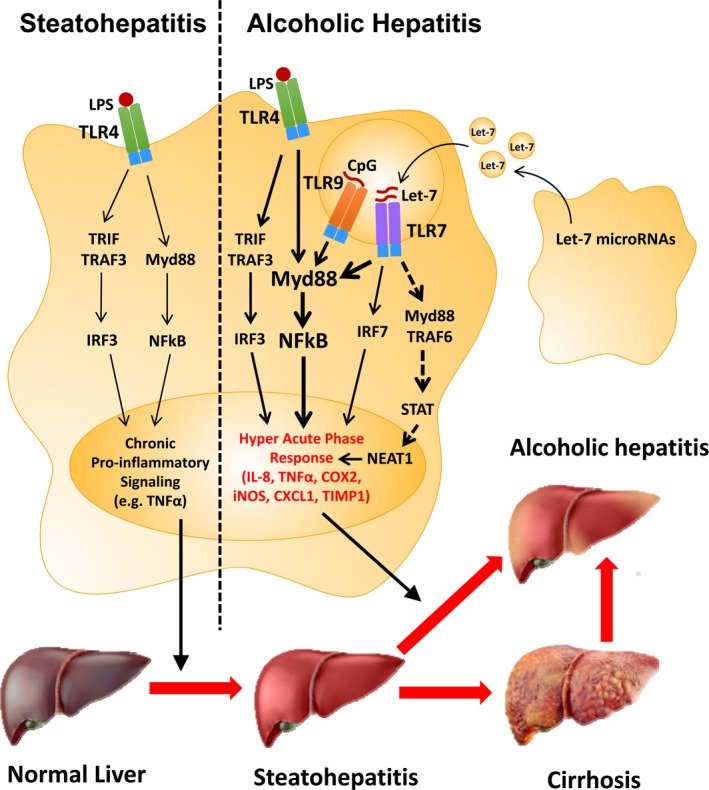Figure 8.

Activation of the TLR7 receptor by let‐7 microRNAs as a novel mechanism contributing to the onset of alcoholic hepatitis (AH). Increased systemic lipopolysaccharide (LPS) caused by EtOH has been shown to activate hepatic TLR4, which contributes to pro‐inflammatory signaling (e.g., TNF α) during alcoholic liver injury. However, the mechanisms that contribute to progression to acute AH remain unclear. In mouse hepatocytes, fat accumulation was associated with decreased TLR7 expression (Kim et al., 2016); however, in our human liver biopsy studies, NASH did not show decreased TLR7 mRNA expression. Our research indicates that both the TLR7 receptor and let‐7 microRNAs, endogenous ligands of TLR7, are increased in patients with AH. Therefore, we propose that increased hepatic TLR7 signaling via increased expression of the TLR7 receptor, the endogenous ligand (let‐7b), and TLR7 signaling components (e.g., MyD88, NF κB‐p65) may contribute to a hyperacute innate immune response which triggers progression to acute AH. Activation of the lncRNA NEAT1 via TLR7 may also contribute to activation of a unique subset of inflammatory genes, including IL‐8.
